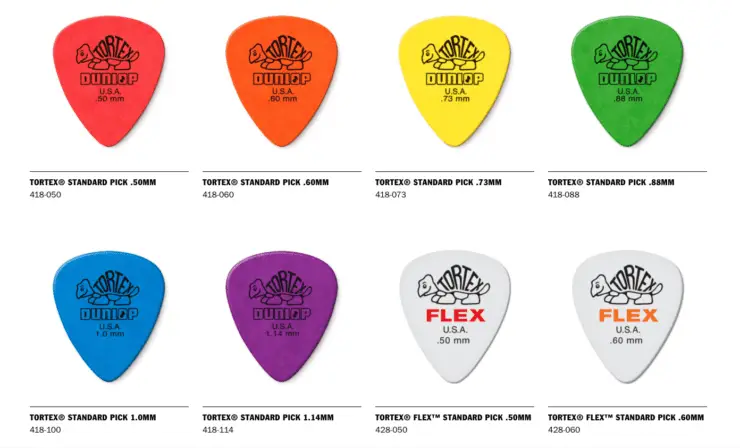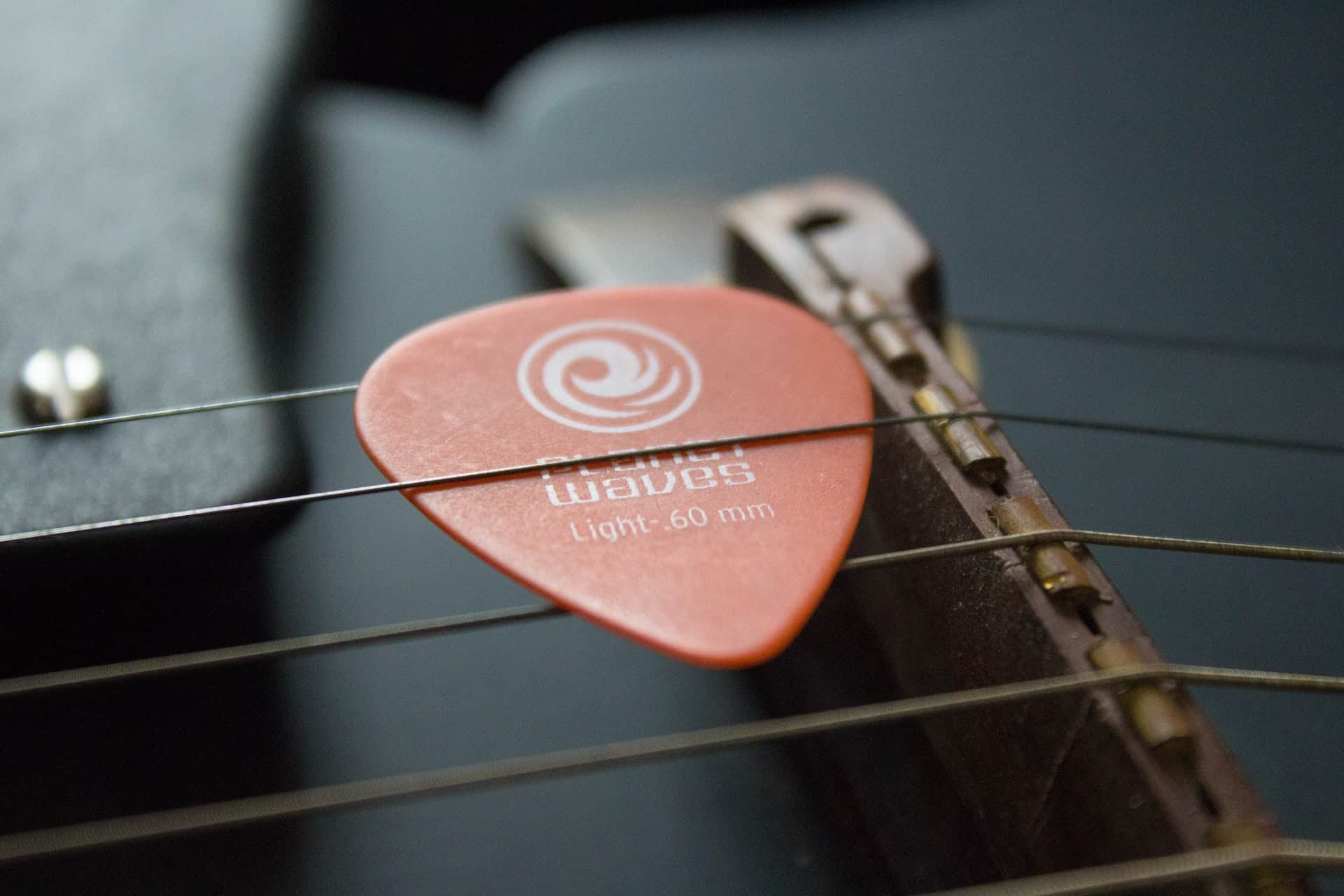Choosing the right pick to play your guitar can have a vital influence on your musical performance. But it is one of the most often ignored aspects of the guitar world. As this is an important issue, in the following article, I will help you answer the question “What guitar pick should I use?”.
What sizes of guitar pick are there?
The pick is an important element that you use to join your hand with the strings of your guitar, just like a drummer does with his drumsticks or a violinist does with his violin bow. To begin with, you must take into account the size of the pick you will use.
Even though there is a standard size for picks, which is the most appropriate for most of the styles to be played with your guitar, you must know that there are smaller and bigger sizes. These sizes are used to satisfy special needs. There are smaller picks that are normally used for faster playing styles. There are also larger picks that are used to play the bass guitar where the strings are thicker and a larger element is needed to make them sound.
What thickness of a pick is recommended to use?
Another important point to keep in mind to define what guitar pick I should use is the thickness of the pick. This is measured in millimeters (mm), and you will see that the most common ones go from 0.48 mm to 3 mm. Generally, thicker picks produce a deeper sound and are also slower to play. Thinner picks have a higher-pitched sound, generate less volume, and are a little faster because they have less material contact surface with the string.

In general, the thinner picks (less than 1 mm) have proven to be the most appropriate for playing on fast rhythms or where a rhythmic guitar that stands out as in “Funk” is needed. Thicker picks (above 1.5 mm) tend to work better on rhythms such as Jazz and Blues because they generate a thicker sound that stands out more. In styles such as Rock or Pop, intermediate thickness picks between 1 mm and 1.5 mm are usually used.
What are the most common materials used to make guitar picks?
Most picks are usually made of celluloid, and these have proven to be the most appropriate for playing the electric guitar. But to play acoustic guitars, it is better to use nylon picks, since this way, you can highlight the strumming of the strings better.
There is also more stranger picks made of materials such as polycarbonate, acrylic, metal, wood, stone, or bone. But all these materials are used only for cases where a specific type of material is required to achieve a special sound. Below I will write a list of the materials from which the picks are made, the most used, and some rare ones too.
Celluloid picks
Without a doubt, the most used material to make guitar picks is celluloid. This due to the memory of this material. The memory is its capacity to return to its initial state after being bent or forced. It is a simple and reliable pick chosen to achieve a classic or vintage sound. For example, Joe Satriani uses this type of material as his first choice.
Nylon picks
Nylon is used to make thinner picks than celluloid. Most thin and extra-thin picks are made from this material. These picks often lose flexibility after intensive use. They are not usually deformed, but they can become fragile and also break with some use, so it is prudent to have some spare ones if you choose this option. They are selected because they are usually sharper than celluloid ones. Because of this, they produce less noise when playing. John Petrucci typically uses this nylon picks.
Polycarbonate picks
Polycarbonate is a very durable polymer, harder than nylon and celluloid. These picks are commonly deformed, but are inexpensive and produce good sound. They are usually used to make thick picks, and as it is a moderately rough material. The picks made of this material are usually customized with printed images or logos.
What are the rarest materials to make a guitar pick?
Acrylic picks
This material is among the most respected and popular of the modern materials used to make guitar picks. The V-Picks Company manufactures picks from this material that have a bright tone and produces a fast, hard, and powerful attack sound. They are of great rigidity and average thickness. They are somewhat expensive, and what stands out most from acrylic is its great durability.
Metal picks
The metal produces a bright sound and is ideal for high harmonics. They are widely used for strumming, and you can find nickel, brass, bronze, aluminum, silver, and gold picks as well. They produce a metallic sound full of harmonics, generate great damage on the strings, and this is something that does not happen with plastic picks.
Wooden picks
Wooden picks are not common and are somewhat difficult to obtain. They are usually sought after by guitarists who want to achieve a special and unique sound with this material. They are usually used to achieve acoustic sounds since they offer a strumming sound that is somewhat different from that achieved with other types of materials.
Stone picks
Stone picks are also rare and hard to come by. They have no flexibility at all, so they generate a dry, hard sound. Their tone is not as bright as the sound achieved with metal picks but brighter than that achieved with celluloid or nylon picks. The advantage is that they can be made with any type of common or precious stones. As they are handmade, they are usually expensive, but their durability is very long.
A conclusion about which guitar pick to choose
As a conclusion of all that has been discussed so far, you can say that the larger the pick, the greater the volume, and the smaller the pick, the smaller the volume. Depending on the thickness and the material used, a greater o lower transmission of energy is achieved from the hand to the string, due to the rigidity of the material used. Therefore, you see that choosing the right thickness is very important. Now you can choose yourself which pick you should use based on the type of guitar and the style of music you want to play.



